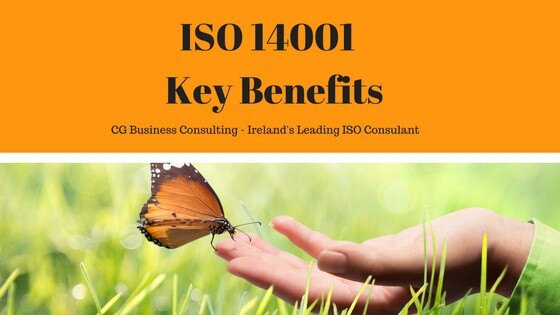ISO 14001 Environmental Management Cetification | Key Benefits
ISO 14001 is an internationally agreed standard that sets out the requirements for an environmental management system. It helps organisations improve...
2 min read
Caroline Geoghegan : Sep 18, 2017 9:00:31 AM

ISO 14001:2015 specifies the requirements for an Environmental Management System (EMS) that an organisation can use to enhance its environmental performance. It is intended for use by businesses seeking to manage their environmental responsibilities in a systematic manner that will positively contribute to environmental sustainability.
Making responsible decisions that will reduce your business' negative impact on the environment.
The standard ensures its objectives both wholly support the every-changing needs of the world we live in, and fully reflect the increasingly complex environments in which businesses operate and has been revised in line with a new high-level structure for all management system standards adopted by the ISO (Annex SL).

In the first of four related posts, we will focus on the first major amendment - The context of the Organisation.
The highest level changes to ISO 14001 2015 Clauses are those found in 4, 5, 6 and 9:
Key changes include:
A word to the wise. Certain changes have been made to terminology used in the revised standard, the most pertinent of which is to 'Life Cycle'.
Life Cycle: Consecutive and interlinked stages of a product (or service ) system, from raw material acquisition or generation from natural resources to end-of-life treatment.
The revised standard refers to Life Cycle in respect of consideration of environmental aspects and operational controls.
"Business Environment, Combination of internal and external factors and conditions that can have an effect on an organisation’s approach to its products, services and investments and interested Parties"
An organisation is now required to demonstrate, at leadership level, that it understands both the internal and external issues that can positively or negatively impact on how it undertakes its environmental responsibilities.
Many companies use what’s known as a SWOT analysis to help them determine ‘their context’ (SWOT is a study undertaken to identify an organisation’s internal Strengths and Weaknesses, as well as its external Opportunities and Threats.)
While such analysis need not be documented, assessors/auditors will ask leadership to outline how they determined the context of their organisation.
External environmental factors
External culture
Internal conditions
"The organisation shall determine the interested parties that are relevant to the EMS, the relevant needs and expectations of those interested parties, and which of these needs and expectations become part of their compliance obligation."
Interested parties can include anything from shareholders, employees,
regulators, and suppliers to customers, neighbours and community groups.
The scope of the EMS is intended to clarify physical and
organisational boundaries. An organisation is free to implement the standard across its entirety or limit its implementation to a specific area or division but only in situations where senior management are authorised to establish an EMS.
The consideration of external influences and compliance obligations of interested parties are new additions to this clause.
Factors to be considered when determining the scope are:No
What does our organisation want to achieve and how are we going to achieve it?
These objectives can be strategic or tactical but they must be clearly defined and performances must be measured against intended outcomes.
While an organisation retains the authority to and responsibility for deciding how it fulfils intended outcomes, including enhanced environmental performance, to achieve its intended aims it must establish, implement, maintain and continually improve an EMS. Once an organisation confirms it conforms to ISO 14001:2015, the requirement to make the scope statement available to interested parties applies.
In the second part of this four part series we will focus on the changes in ISO 14001:2015 with regard to Leadership.
For more information on Environmental Management Systems, ISO certifications and ISO 14011:2015 assessments, contact CG Business Consulting.

ISO 14001 is an internationally agreed standard that sets out the requirements for an environmental management system. It helps organisations improve...

Celebrate Environmental Sustainability with us today on World MSME Day. How are MSME's making it Big in the Sustainable Movement.

In October 2022, the Irish Environmental Protection Agency reported that only half of Ireland’s sewage was being treated in compliance with the EU’s...